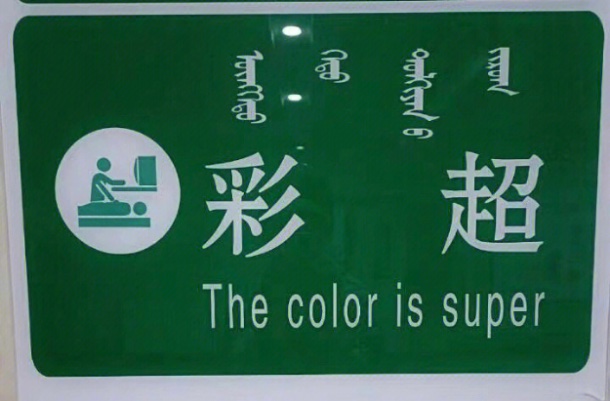[This is a guest post by Greg Pringle, in response to questions I posed regarding the photograph at the top of this post from yesterday, mainly:
What does the Mongolian script say? Does it match the Chinese*? Are there any mistakes in it?
*The Chinese is short for "in color with Doppler ultrasound".]
The Mongolian says önggöt – het dolgion – zurag (ᠥᠩᠭᠡᠲᠦ ᠬᠡᠲᠦ ᠳᠣᠯᠭᠢᠶᠠᠨ ᠵᠢᠷᠤᠭ). It literally means "coloured ultra-wave picture" or, as Google Translate has it, "colour ultrasound imaging”. My Inner Mongolian dictionaries confirm that önggöt het dolgion zurag means literally “彩色超声波图” in Chinese and it is found on the Internet with that meaning.
You quote Diana Shuheng Zhang as saying the Chinese means "Color Doppler Ultrasound". I did find önggöt doppler zuraglal (Өнгөт Допплер зураглал) "coloured Doppler sketch” in Mongolian-language pages on the Russian Internet, and Jichang Lulu found a couple of sources from Mongolia.
Rather than continue confirming what you already know, I think it fair to bring up the issue of terminology.
Read the rest of this entry »







